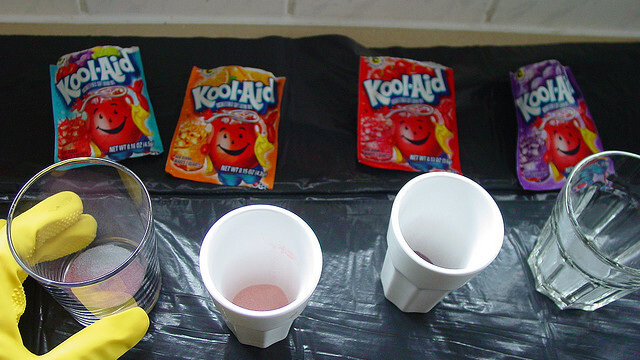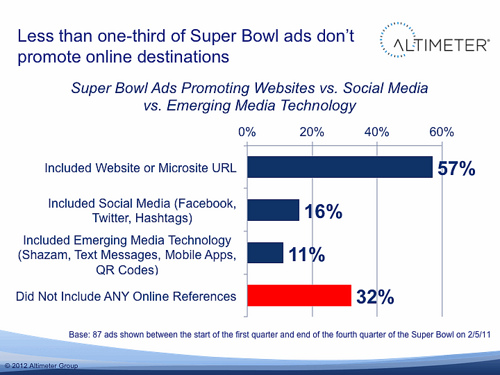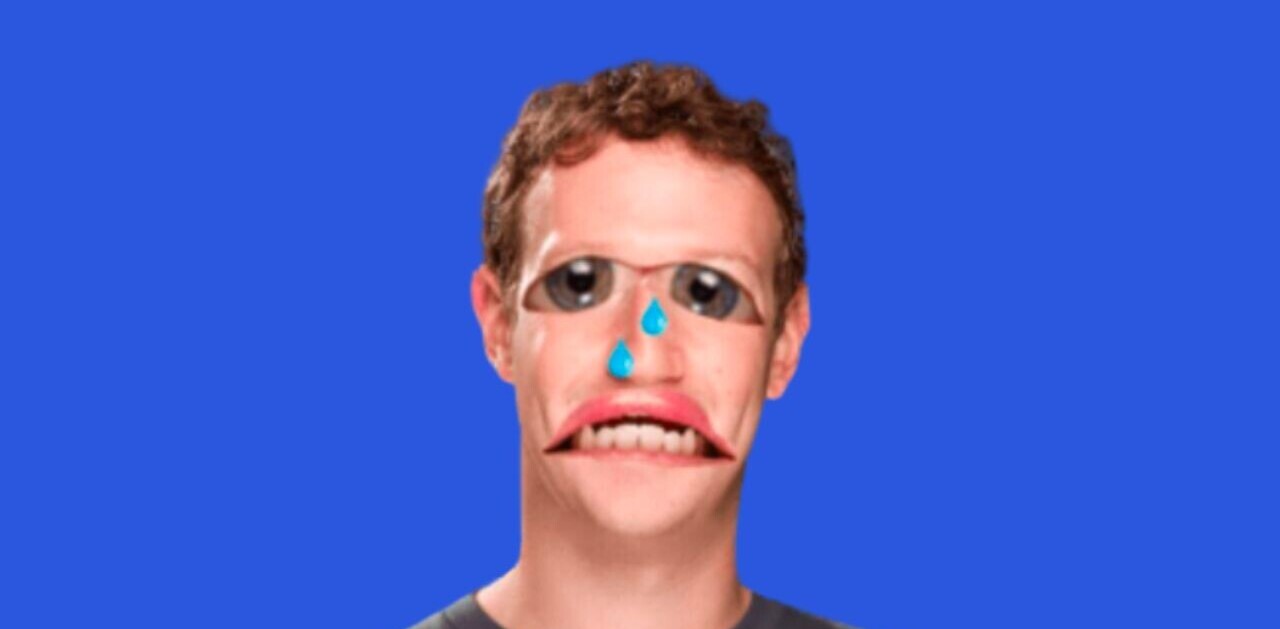
If you watched the Super Bowl on Sunday you caught a pretty good show. From a football perspective, it was a pretty exciting game in the fourth quarter. The ads during the big game? Not so super if you ask me.
In one of the biggest yearly opportunities to catch a large audience staring at a screen for hours on end, big brands spent an estimated $3.5M each on Super Bowl ads. It’s the perfect time for innovation and interaction, especially using the Internet, Twitter, and Facebook, right? Wrong, big brands spending major money for ads aren’t so sold on using social media just yet.
According to analysis from Altimeter Group, 32% of the eighty seven ads displayed yesterday made no online reference whatsoever:
In what I’ll call “playing it safe”, it appears that most companies who did make reference to a presence on the Internet, chose to use their own URL rather than a hashtag or Facebook URL. Why is this? It has to do with controlling the message, obviously.
If I’m company and I’m spending a lot of money on the biggest television stage in the United States, there’s absolutely no way I’m going to ask millions of people to use a hashtag. There’s just no context to be had there and nothing to be gained. As we’ve seen with a recent McDonalds hashtag gaffe, it might actually cost you more money and brand integrity to defend something gone awry.
I’ve seen hashtags pop up on the screen a lot during television shows, and that’s the context that makes sense for me. If I’m watching a show that I’m really into, there’s a good chance that I’ll tweet something using its hashtag as a reference point and as a way to become a part of a larger conversation. For Super Bowl ads that cost so much money, there’s only one conversation to be had: did it suck or not? That’s not a question these brands want to ask, therefore they kept the social out of the ad.
In fact, the Altimeter Group points out that hashtags were only a part of 7% of the Super Bowl ads yesterday, and that doesn’t surprise me a bit. You can’t have a conversation without context, and I think that brands restraining themselves from using social media hooks and tricks as a way to seem cool is a good thing. These are “display” ads after all, and not interactive ones.
Get the TNW newsletter
Get the most important tech news in your inbox each week.






